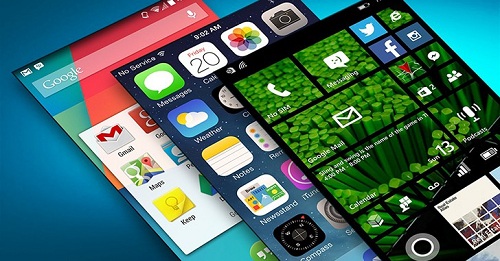How to Share Data between Windows and Android device for free
Sharing files from an Android Smartphone to a Windows computer, or vice versa was a tricky affair earlier. You had to connect your Android device with your PC through a USB cable, look for the files in the device storage, and then copy them with the hope that nothing goes wrong in the process. Also, the data transferred slowly, and there will be the risk of malware and viruses. But now, sharing files between Android and Windows device became easier with the evolution of apps. Here are some free apps that can transfer data easily and quickly.

Free applications to share files between Android device and PC:
• AirDroid
• PushBullet
• Feem
• Your Phone app
You can use any of these apps on your device.
How to download and use AirDroid to transfer files
With AirDroid app, you can share files across devices, control your device remotely, send and receive messages. You can download the app from “www.airdroid.com/en/get.html” on your iOS or Android device.
1. Download the ‘AirDroid’ app.
2. Register on ‘AirDroid.’
3. Log in with your account on both the devices.
4. Connect both Android and Windows device with the same Wi-Fi network.
5. Now, open the app and find your devices under ‘My Devices’ in the application of both devices.
6. You can drag and drop or attach the files to transfer.
How to download and use PushBullet to transfer files
PushBullet app also allows sharing of data between two devices. You can transfer files, photos, videos, and more. The app also supports messaging features, but one downside is that you can’t share apps with it. You can download and install the PushBullet app in your device from “www.pushbullet.com/apps.” PushBullet also offers extensions for browsers like Google Chrome, Firefox, and Opera.
1. Download the ‘PushBullet’ app.
2. Sign in into ‘PushBullet.’
3. Log in with your same account on both the devices.
4. Set up PushBullet on your android device.
5. Now, open the app and find your devices under ‘Devices’ in the Windows application. You may need to tap ‘Remove Files’ first on your Android device.
6. Click the ‘Attach’ option to select the data to transfer.
7. Click the ‘Arrow’ button to send the files to your PC.
8. Now, open the Windows application and download your files.
How to download and use Feem to transfer files
Feem V4 provides the fastest data transfer speed; the company claims that it can transfer data 50 times faster than Bluetooth. One more thing about the app is that you can also share apps with it. To download the Feem V4 application on your devices, go to “feem.io/index.html#download.”
1. Install the Feem app on both devices.
2. Connect both Android and Windows device with the same Wi-Fi network.
3. Feem will give a name to the devices, and show them on each other’s application.
4. Now, open the app on the device from which you want to transfer the files.
5. Select the files and send the data. You can select many files at a time.
How to download and use Your Phone app to transfer files
Your Phone app is a product of Microsoft, at the end of last year Microsoft introduced it. The app has some limitations; you can only access recent messages, photos, and screenshots and nothing else. You can’t share multiple files at a time, and the biggest problem is it doesn’t allow to share photos from Windows to Android device. You can download Your Phone application from Microsoft Store on PC and Play Store on Android device.
1. Install the app on your devices.
2. Open ‘Your Phone’ app on PC.
3. Provide your country code and phone number.
4. The app will send a message on your phone with a downloading link.
5. Open the message and download the app by using the link.
6. After installing on Android, click on ‘Connect my PC.’
7. Sign in to your Microsoft account on both the devices.
Now, you can access recent photos and text messages on your PC.
Ellen Cooper is a technology enthusiast who loves writing about new advancements and IT threats on a regular basis. Her work focuses on the latest advancements in the realm of technology, social media, and cyber security at norton.com/setup.
Comments
Post a Comment